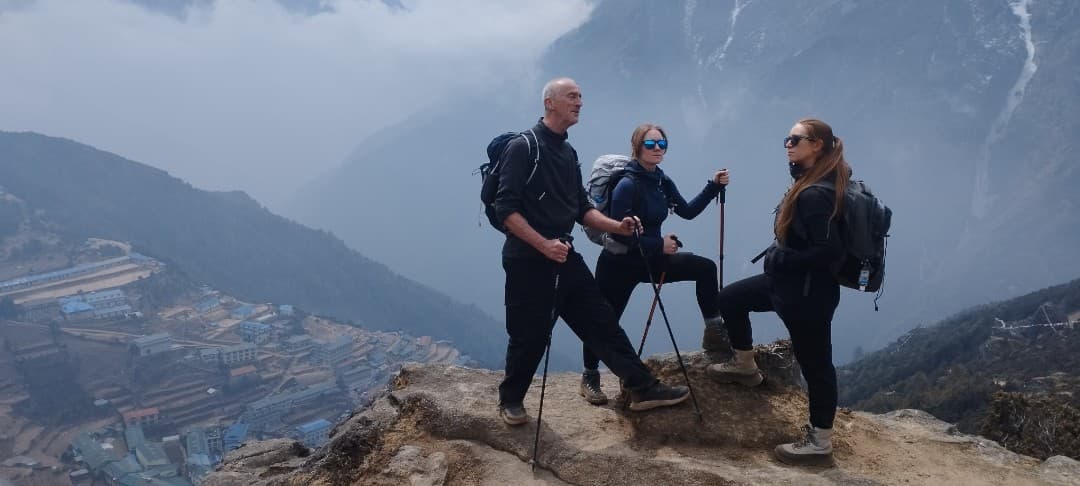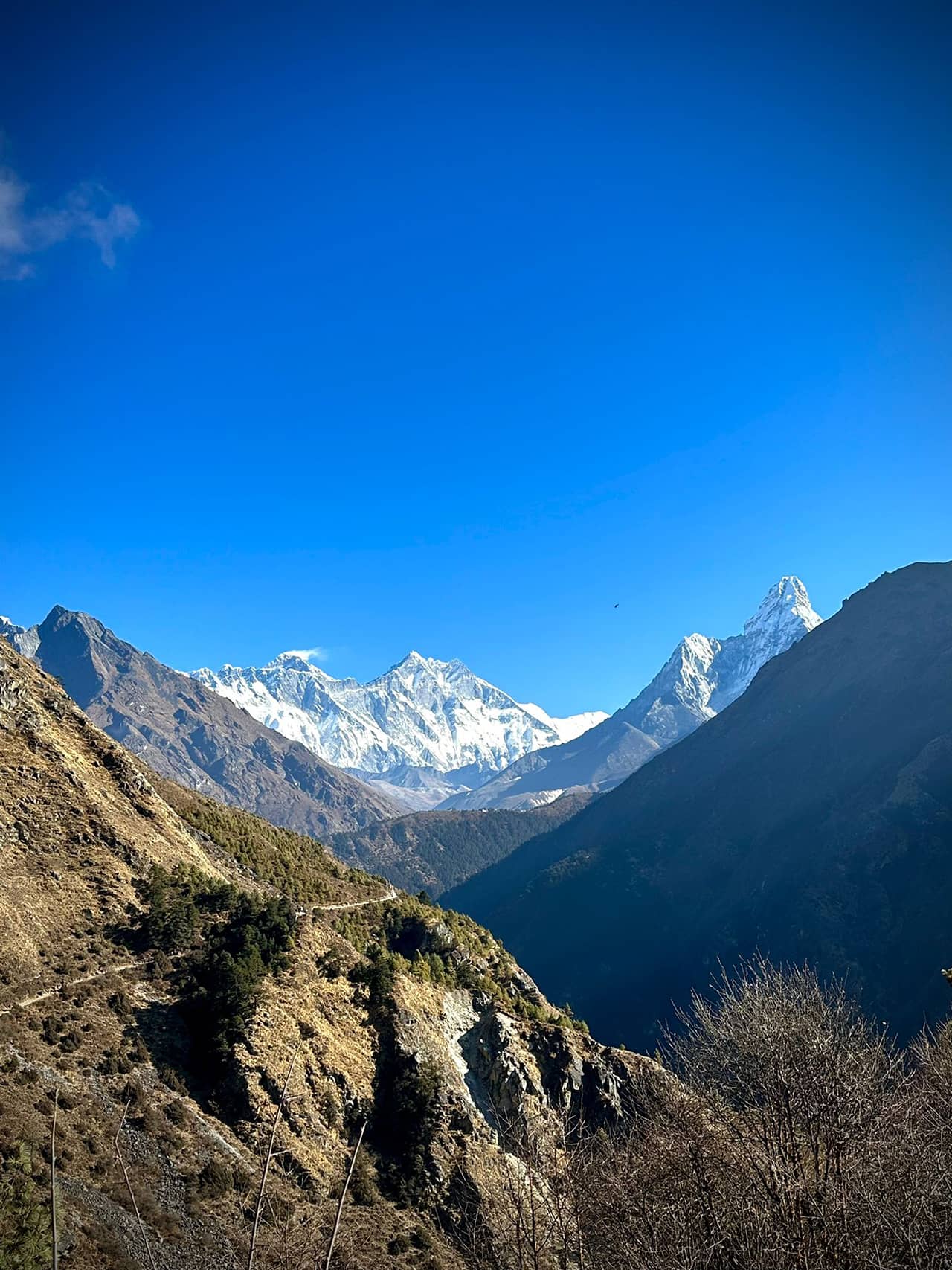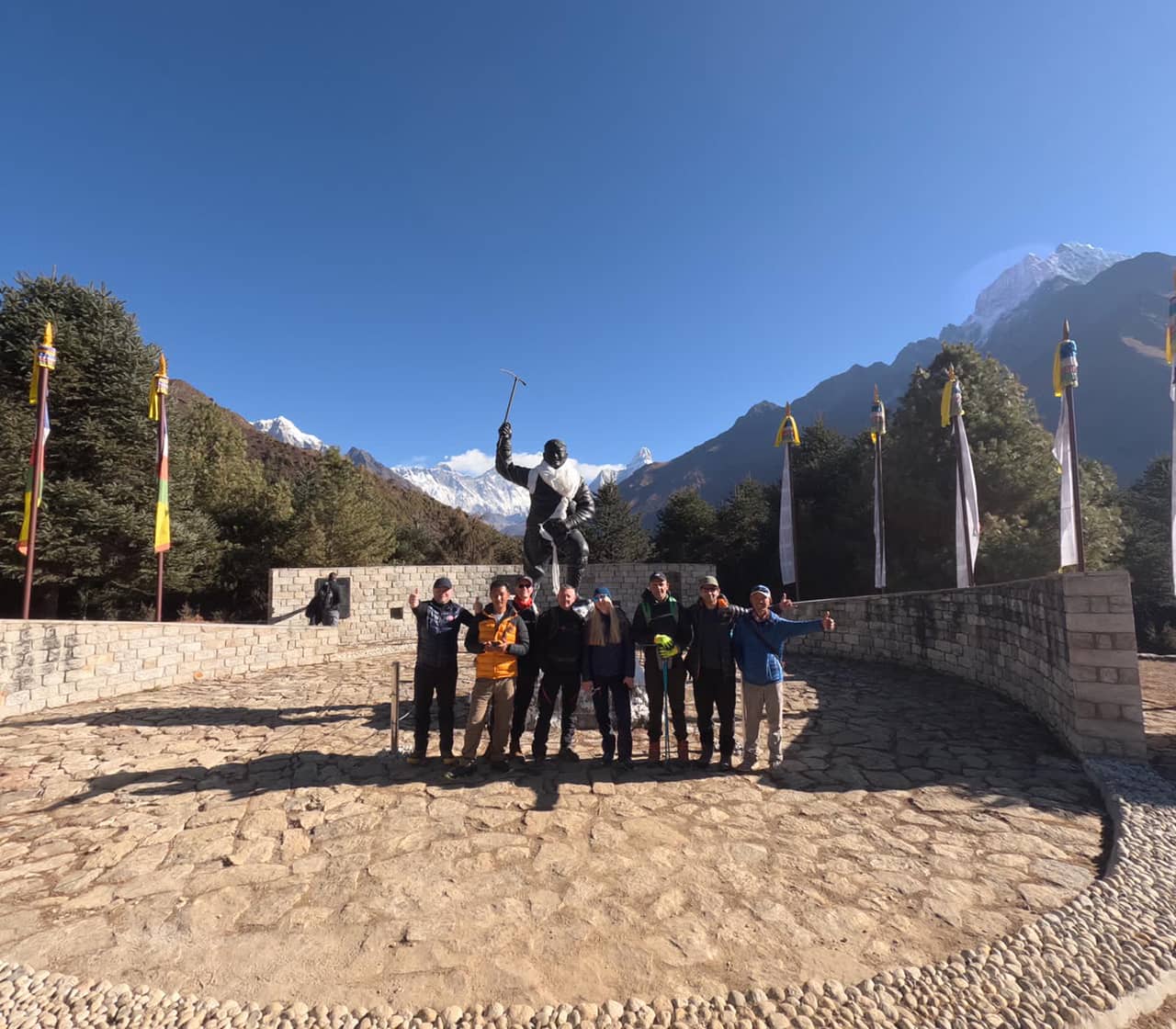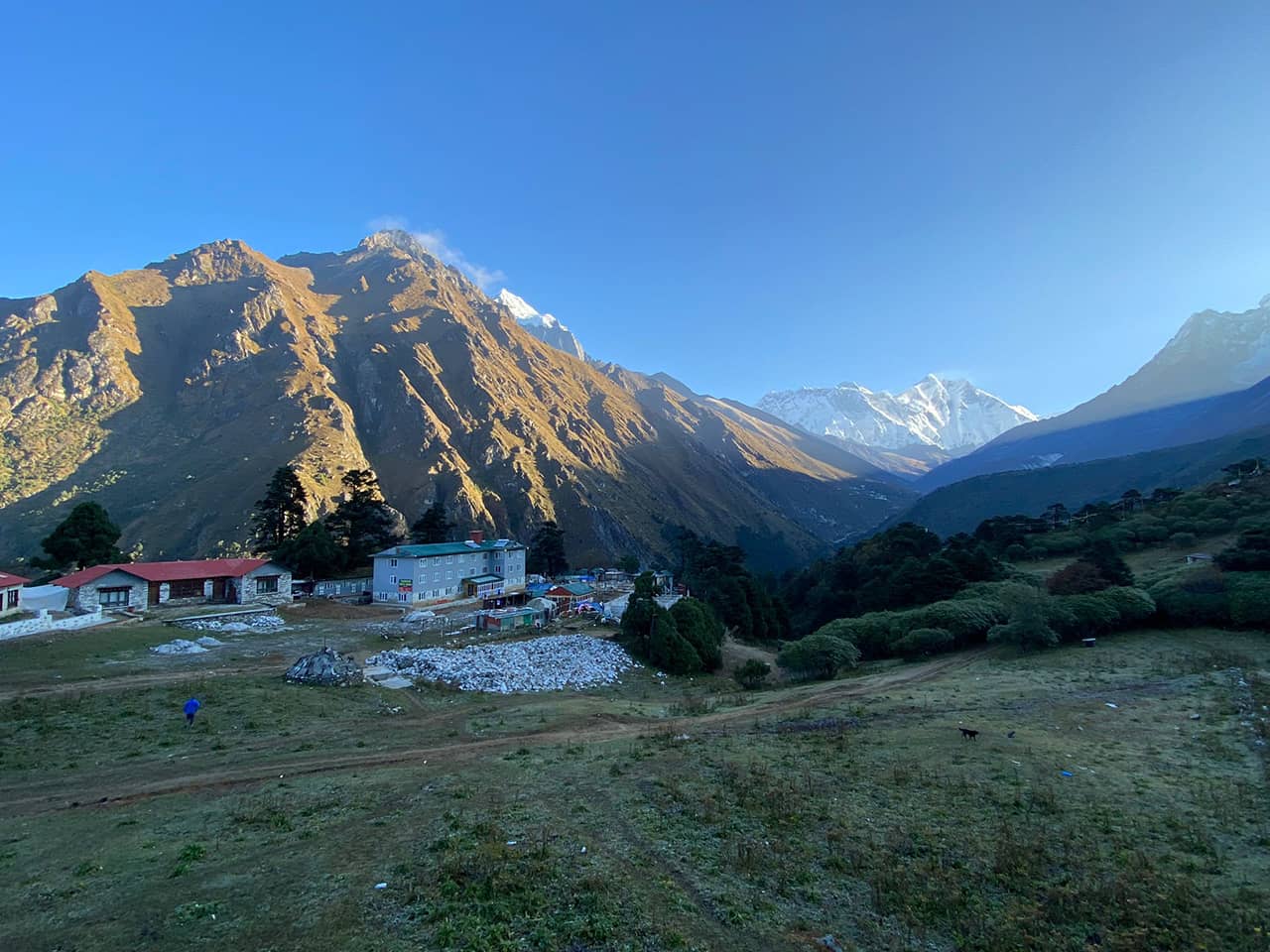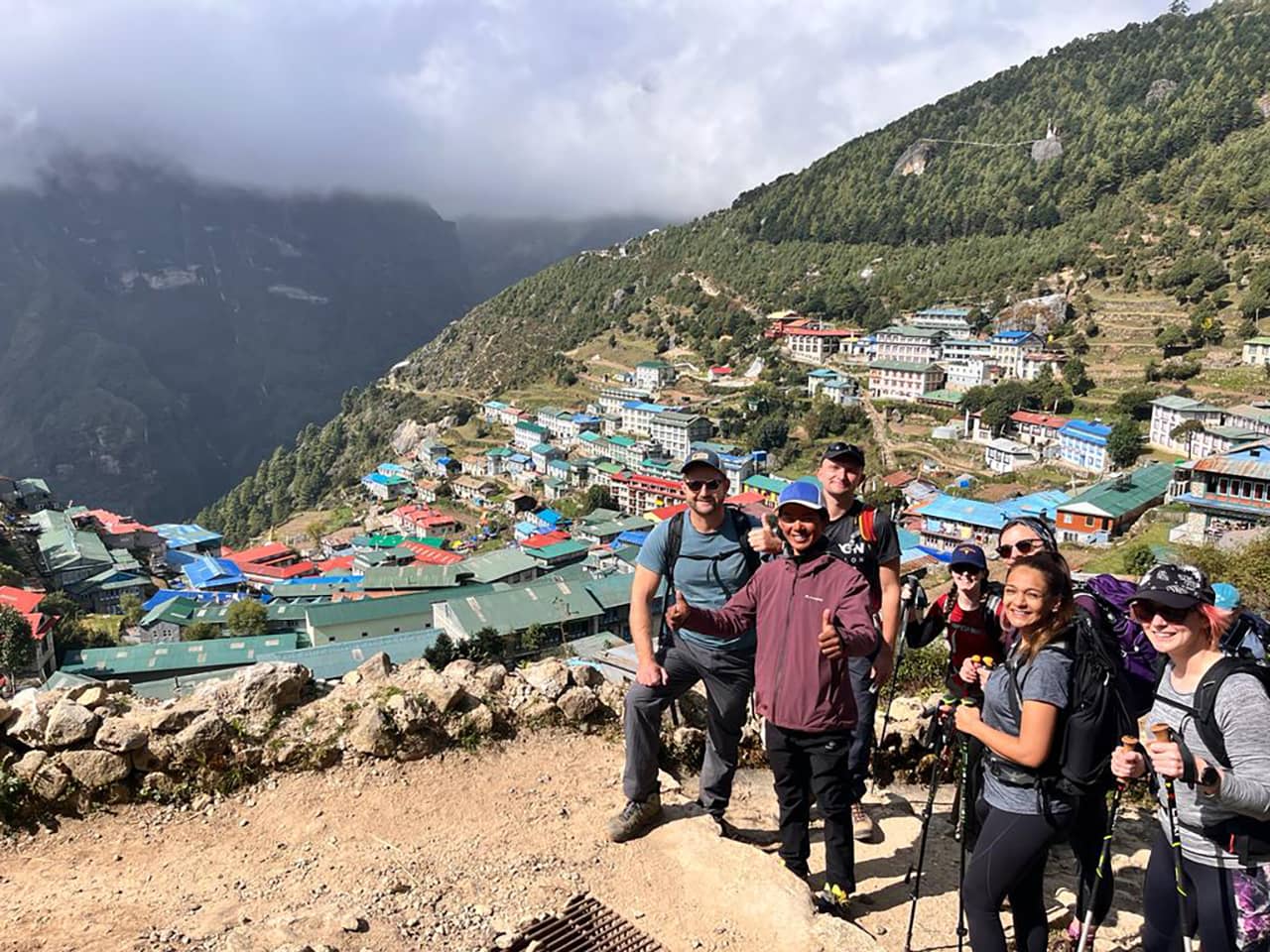Contact Info
Everest Panoramic Trek
INFORMATIONS
Everest Panoramic Trek Overview
The Everest Panoramic Trek is a special journey that lets you enjoy amazing views of the famous Mount Everest and other tall mountains in the Himalayas. This trek is perfect for people who want to see stunning mountain scenery without going all the way to the Everest Base Camp. It is a bit easier than the full Everest Base Camp trek, but you still get to experience the beauty of the Everest region The trek starts in Kathmandu, the capital city of Nepal. From there, you fly to Lukla, a small town in the mountains. This is where your trek begins. The first day is spent walking to Phakding, a small village. As you walk, you’ll see beautiful forests, rivers, and the famous Sherpa villages. Sherpas are the people who live in the Everest region and they are known for their strength and friendliness.
On the second day, you hike to Namche Bazaar, which is a busy town in the mountains. Namche is the main stop for trekkers, where you can find shops, restaurants, and even internet cafes. You can spend an extra day here to rest and get used to the higher altitude. While in Namche, you can visit the Everest View Hotel, which gives you a clear view of Mount Everest and other nearby mountains.
After Namche, you will trek to Tengboche, where you can visit the famous Tengboche Monastery. This is a peaceful place with stunning views of Mount Everest, Lhotse, and Ama Dablam. The next stop is Khumjung, a beautiful Sherpa village where you can learn more about Sherpa culture and life in the mountains.
The final part of the trek takes you back to Lukla. From there, you fly back to Kathmandu. The whole trek takes about a week, and during this time, you’ll walk through forests, cross rivers, and pass by small villages where you can learn about local life.
The Everest Panoramic Trek is not only about the beautiful views but also about the people you meet and the experiences you have along the way. It’s a great way to explore the Everest region if you’re looking for an adventure that’s not too hard but still full of amazing sights and memories.
Trip Highlights
- Stunning Views of Mount Everest: You’ll get amazing views of Mount Everest, the tallest mountain in the world, from places like Namche Bazaar and the Everest View Hotel.
- Visit to the Everest View Hotel: This hotel offers one of the best places to see Everest and other tall mountains. It’s a great spot for photos!
- Trekking Through Sherpa Villages: You’ll walk through villages like Phakding, Namche, and Khumjung. These are home to the Sherpa people, who are known for their strong connection to the mountains.
- Beautiful Tengboche Monastery: In Tengboche, you can visit a peaceful monastery surrounded by amazing mountain views. It’s a special place to learn about the culture.
- Wildlife and Nature: On the trek, you’ll see beautiful forests, wildlife, and rivers. You might spot animals like yaks Himalayan tahr, and various birds.
- Adventure Through Suspension Bridges: You’ll cross big, swinging suspension bridges over rivers, which can be a fun and exciting part of the trek.
- Learning About Sherpa Culture: In villages like Khumjung, you’ll learn about the Sherpa way of life, including their traditions clothing, and food.
- The Peaceful Atmosphere: The trek is peaceful, away from city noise. You’ll enjoy the quiet beauty of the mountains and the sound of nature.
- The Challenge of High Altitude: The trek helps you slowly get used to higher altitudes, which is a fun challenge for your body
- Sense of Accomplishment: Completing this trek gives you a big sense of achievement. It’s not too difficult, but it still feels amazing to reach each new stop and see the breathtaking views.
Why choose Everest panoramic Trek with Sherpa Holic Trek?
Choosing Everest Panoramic (EBC) trekking in Nepal is a once-in-a-lifetime adventure that offers a perfect blend of natural beauty cultural richness, and personal challenge. Here’s why it stands out
Icon Destination: Trek to the foot of Mt. Everest (8,848m), the highest mountain in the world.It's a dream trek for many adventurers and mountaineers.
Breathtaking Scenery: Witness stunning Himalayan panoramas: Everest, Lhotse, Nuptse, Ama Dablam, and more.Experience dramatic landscapes, glaciers, alpine forests, and high-altitude villages.
World’s Highest Peak: It leads to the base of Mt. Everest (8,848.86 m), the highest mountain in the world. Standing close to such a majestic peak is a dream for many trekkers.
Sherpa Holic Trek & Expedition lead you and make you Life Time Experience in the Himalaya.
Sherpa Culture: Explore authentic Sherpa villages including Namche Bazaar, Tengboche, and Khumjung.Visit Tengboche Monastery the spiritual center of the Khumbu region.
Sense of Accomplishment: Completing the EBC trek is a personal achievement that tests your endurance and spirit.It offers a deep sense of pride and fulfillment.
Teahouse Experience: Enjoy the warmth of traditional Nepali teahouses and local hospitality.Taste local dishes like dal bhat Sherpa stew, and yak cheese.
Adventure and Challenge: The trek is a perfect blend of adventure and personal achievement. Reaching the base camp at 5,364 meters is a big milestone for trekkers.
Adventure with Safety: With the right guiding company (like Sherpa Holics Adventure), safety, acclimatization, and support are well-managed.
Global Reputation: The trek is internationally famous and attracts adventurers from all over the world, making it a multicultural experience too.
Why Trust With Sherpa Holic Trek & Expedition Team
Sherpa Holic Trek & Expedition is more than just a trekking company it’s a team led by passionate, experienced Sherpa professionals who were born in the heart of the Himalayas. Here’s why adventurers from around the world trust us:
Led by Real Mountain Experts: Our team, including award-winning trekking leader Nurbu Sherpa and founder as well Sherpa have deep roots in the Himalayas and years of hands-on guiding experience.
Safety First, Always: Your safety is our top priority. We follow strict safety protocols, carry essential gear, and ensure all staff are trained in first aid and high-altitude response.
Authentic Local Experience: As a locally run company, we offer you a genuine cultural journey — not just a trek. You’ll meet local people, experience Sherpa traditions, and feel the soul of the mountains.
Custom Itineraries with Fair Prices: Whether you're looking for a challenging expedition or a peaceful trek, we customize your adventure to fit your time, budget, and goals all without compromising on service.
Sustainable and Responsible: Tourism We care deeply about preserving the Himalayas. We support local communities, minimize our environmental impact, and promote ethical trekking practices.
Trusted by Trekkers Worldwide: Our guests return with smiles, stories, and unforgettable memories. Many recommend us to friends and family a true sign of trust.
Cultural Experience Visit Sherpa villages like Namche Bazaar Phortse Tengboche Monastery and experience Sherpa culture monasteries, and hospital.
Altitude Considerations The trek involves considerable altitude with Tangboche 3,800 meters. Proper acclimatization is essential to avoid altitude sickness.
Itinerary
ON Day 1 you will arrive in Kathmandu, the capital city of Nepal. When you land, a friendly guide will meet you at the airport and take you to your hotel. Kathmandu is a busy city full of life, with colorful streets and lots of people. It’s a great place to start your adventure. Once you get to your hotel, you can rest and relax after your flight. The hotel will be comfortable and cozy, so you’ll feel at home. You’ll also have some free time to explore Kathmandu if you want. You can walk around the city, visit some local shops, or try some tasty food. In the evening, your guide will meet you and talk about the trek ahead. They will explain the plan for the next few days and answer any questions you have. It’s important to get a good night’s sleep so you’re ready for the trek. The next morning you will fly to Lukla and start your journey to the Everest region. So, Day 1 is all about getting settled in Kathmandu, preparing for the exciting days ahead, and getting to know a little bit about the adventure that awaits you.
On Day 2 you will drive to Manthali, a small town at 4,74 meters. The 7-8 hour drive will take you through beautiful countryside with green hills, rivers, and local villages. The road may be bumpy, but the scenery makes it worth it. As you get closer to Manthali, you will see the mountains in the distance, building excitement for your trek ahead. Manthali is a peaceful town, perfect for a quiet rest before the next day’s flight to Lukla. After you arrive, relax in a local guesthouse, enjoy a warm meal, and get a good night’s sleep for the journey ahead.
On Day 3 you will wake up early, excited for the start of your trek. After breakfast, you will drive to Ramechhap, a small town where you will catch a flight to Lukla. The flight is short but exciting, with beautiful views of the mountains as you fly. Lukla is a small town at 2,860 meters high, and it’s where the trek really begins. Once you land in Lukla, you’ll start your trek to Phakding, a peaceful village located at 2,610 meters. The walk is mostly downhill or flat, so it’s not too difficult. As you walk, you will pass through beautiful forests filled with tall trees, and you may even see yaks and other animals along the way. Along the trail, you will see traditional Sherpa villages, where you can get a glimpse of local life. The people are friendly and happy to meet trekkers from all over the world. You’ll follow the Dudh Koshi River, which makes a peaceful sound as it flows through the valley. When you reach Phakding, you’ll stay in a cozy guesthouse for the night. It’s a nice place to rest, enjoy dinner, and get ready for another day of trekking tomorrow.
On Day 4 you’ll continue your trek to Namche Bazaar, which is at 3,440 meters. This is one of the most important towns in the Everest region, so it will be a busy and exciting day! The trek today is a bit more challenging because you’ll be walking uphill for most of the day. As you walk, you’ll pass through beautiful forests of pine trees, and you may even spot some wildlife, like monkeys or Himalayan tahrs (a type of goat). You’ll also cross several suspension bridges that hang over the Dudh Koshi River. These bridges are fun to walk on, but they can be a little wobbly. As you get closer to Namche, the views of the mountains will become even more amazing. You’ll start to see the snowy peaks of Everest, Lhotse, and Ama Dablam in the distance. The sight of these huge mountains will make the hard work of trekking uphill feel totally worth it. When you arrive in Namche Bazaar, you’ll feel a sense of achievement. Be relaxed and enjoy the view with your guide and know more about the place. Namche is a lively town with shops, cafes, and even a place to buy supplies. You’ll rest here for the night, enjoy a nice dinner, and get ready for another exciting day tomorrow.
On Day 5 you will take a rest day in Namche Bazaar to explore and get used to the higher altitude. It's important to rest, so your body can adjust to the mountain air. After breakfast, you will have a fun hike to the Everest View Hotel, which is at 3,880 meters. The walk up to the hotel is not too difficult, but it does take some time as you go uphill. As you hike, you’ll get incredible views of Mount Everest, Lhotse, and other tall peaks in the Himalayas. The views are breathtaking and make the hike totally worth itAt the Everest View Hotel, you can relax and enjoy the panoramic views of the mountains. It’s a great spot to take photos and enjoy the beauty of the region. You can also learn about the culture and history of the area from the people who work there. After spending some time at the hotel, you will return to Namche Bazaar. Once back in town, you’ll have the rest of the day to relax and explore. You can visit local shops, enjoy a warm meal, or just rest in the peaceful mountain atmosphere. Tomorrow, your trek will continue, so it's important to take it easy today.
On Day 6 you will trek to Tengboche, which is at 3,860 meters. The walk today is exciting because you’ll pass through beautiful forests, cross rivers, and see more stunning mountain views. The trail is mostly uphill, but the views of Everest, Lhotse, and Ama Dablam make the climb worthwhile! As you walk, you may spot some wildlife like yaks or Himalayan pheasants. The air will get cooler as you go higher, so remember to dress warmly and take breaks when you need them. The peaceful surroundings make it a relaxing and enjoyable hike. When you arrive in Tengboche, you’ll visit the famous Tengboche Monastery. This is a special place for the Sherpa people, where they come to pray and celebrate their traditions. The monastery is surrounded by amazing views of the mountains, so it’s a perfect place to take a moment to enjoy the peaceful atmosphere. After visiting the monastery, you can rest in the village and enjoy a nice warm meal. Tengboche is a quiet and peaceful place, so it’s a great spot to relax after your day of trekking. Tomorrow, your adventure will continue, so make sure to get a good night’s sleep.
On Day 7 you will trek to Khumjung, a charming Sherpa village located at 3,790 meters. The walk is mostly uphill, but it’s a lovely journey through beautiful forests and fields. Along the way, you might see yaks and other animals, and you’ll enjoy the peaceful surroundings of the Everest region. When you arrive in Khumjung, you’ll get a chance to explore the village. Khumjung is famous for its traditional Sherpa houses and its beautiful views of the Himalayas. You can visit the local school, learn about Sherpa culture, and see how people live in the mountains. This is a great place to learn more about the unique lifestyle of the Sherpa people. After spending some time in Khumjung, you will trek back to Namche Bazaar. The return journey is mostly downhill, which makes it a bit easier. You’ll get to enjoy the stunning views of the mountains once again as you walk. When you reach Namche, you can relax, have a warm meal, and rest after your exciting day of trekking. Tomorrow, you will begin your journey back to Lukla, so take it easy and enjoy the evening in Namche.
Today, you will leave Namche and continue your trek down to Lukla. The trail is mostly downhill, so it will be easier to walk, but you still need to be careful, especially when crossing the suspension bridges over the rivers. As you walk, you will pass through forests and small villages, and the air will feel fresher as you descend to a lower altitude. During the trek, you will have more chances to enjoy the natural beauty of the area. The views of the mountains will still be impressive, and you may see local people working on their farms or taking care of animals along the way. Once you reach Lukla, you will feel a sense of accomplishment. Lukla is a busy town where most trekkers start and end their journey to the Everest region. You will have some free time to relax, explore the town, and maybe buy some souvenirs to remember your adventure. After a long day of trekking, you will stay in a guesthouse in Lukla. This will be your last night in the mountains before you head back to Kathmandu. It’s a nice time to reflect on the amazing journey you’ve had and get ready for the flight back to the city.
Today, you will leave Lukla and take a flight back to Manthali. The flight is short but exciting because you will fly over beautiful mountains and valleys. The weather can sometimes change, so the flight may be delayed, but the views from the plane are amazing, and you will have a chance to see the region from a different perspective. After arriving in Manthali, you will board a vehicle for the drive back to Kathmandu. The drive takes a few hours, and during this time, you can relax and enjoy the scenery. The road winds through hills, small villages, and green fields. As you get closer to Kathmandu, the landscape becomes busier with more buildings and people. Once you arrive in Kathmandu, you will feel like you’ve completed an incredible journey. You will have the rest of the day to relax, unpack, and reflect on your time in the mountains. You can also do some shopping for souvenirs or enjoy a meal in one of the local restaurants. This day marks the end of your trek, and you can look back on all the amazing experiences you had while exploring the Everest Panoramic Trek and the Everest region.
Price Includes
- Airport pick-up and drop-off in a private vehicle
- Domestic flights as per the itinerary
- Ground transportation
- Accommodation (twin-sharing Room)
- Daily meals (breakfast, lunch, and dinner and 3 cup tea during the trek
- Trekking permits National Park fees
- English speaking Trekking Leader
- Experienced porter (1 porter for every 2 trekkers, carrying up to 15kg per person
- Every 4 Trekkers 1 Assistant guide
- Safety & Equipment
- First Aid kit
- Oxygen cylinder and oximeter (for high-altitude treks
Price Excludes
- International Flights
- Nepal Visa Fees
- Overstay fines or additional visa extensions.
- Travel & Medical Insurance. Mandatory for all trekkers and climbers.
- Trip cancellations, lost baggage, or delays.
- Personal Trekking Equipment & Gear
- Gear rental if not bringing personal equipment.
- Meals in Kathmandu & Pokhara
- Breakfast, lunch, and dinner while in cities.
- Extra Beverages Snacks & Bottled Water
- Additional Accommodation
- Hotel upgrades beyond the included standard.
- Emergency Evacuation & Helicopter Rescue
- Tips & Gratuities
- Personal Expenses Souvenirs, laundry, internet, and phone calls.
- Hot showers and battery charging at teahouse
- Additional Activities Sightseeing tours, entrance fees, and personal excursions. Adventure sports like paragliding, rafting, or bungee jumping.
- For any specific exclusions related to your trekking or expedition package, feel free to ask. We're happy to assist with recommendations!
Tipping Ratio
It is customary in Nepal to tip your lead guides and files crew . You can give tips to your lead guide at the end of your trip, which will then be shared with the whole team.As part of our transparency initiative, the lead guide will distribute the tips to the guides and porters in your presence.A good rule of thumb is to budget around $ 100 USD per client you need to collect tips, and although the amount you give is entirely your choice.
Kit Lists:
.jpg)
Notes:
Flights depend on weather conditions delays are common Manthali Airport is the alternative airport used in peak trekking seasons due to air traffic at Kathmandu’s Tribhuvan International Airport It’s best to schedule buffer days in case of flight disruptions Flights between Lukla Tenzing-Hillary Airport) and Manthali (Ramechhap Airport) are typically operated by several Nepalese airlines including Summit Air Sita Air The flight duration is approximately 15- 20 m covering a distance of about 74 kilometers.
During peak trekking seasons March to May and September to November flights to and from Lukla are often rerouted from Kathmandu's Tribhuvan International Airport to Manthali Airport. This change aims to alleviate air traffic congestion at Kathmandu Airport and provide more reliable flight schedules for travelers heading to the Everest region?
Client Review 0 reviews
No reviews yet for this package. Be the first to review!

